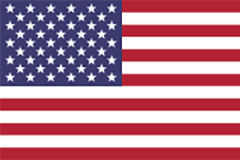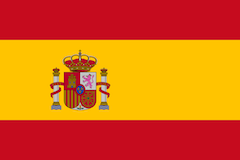La llegada de los españoles en 1532 con su mandato de conquista dio inicio a la colonización europea de los Andes. Francisco Pizarro (ca. 1470–1541) y sus conquistadores encontraron a los Inca inmersos en una guerra fraternal entre Atahualpa y Huascar que se disputaban el puesto de soberano (Sapa Inca) del gran imperio incaico. En 1533 Pizarro ordenó la ejecución de Atahualpa, quien se negaba a reconocer a los españoles y pagar tributo. La resistencia a la ocupación extranjera continuó hasta finales de la década de 1570 en lugares de difícil acceso donde resultaba problemática la dominación, pero el reino de los Inca terminó con la derrota de las fuerzas incaicas en las montañas de Vilcabamba y la ejecución de Tupac Amaru por orden del Virrey Francisco de Toledo en 1572.
Los conquistadores españoles y los misioneros europeos transformaron para siempre la estructura de las sociedades andinas. Los muros de piedra de los sitios y centros religiosos preincaicos e incaicos sirvieron como cimientos sobre los cuales se levantaron nuevos edificios coloniales. Los españoles consolidaron su control sobre la región mediante la integración de aristócratas y elites incaicos como administradores (caciques y kurakas) de municipalidades y provincias locales. Los europeos además trajeron esclavos de África occidental y central que formaron parte del sistema racializado y jerarquizado de castas en el continente americano. Los españoles nacidos en España (peninsulares) o en América (criollos) se diferenciaban de la gente de raza mezclada de ascendencia española-india (mestizos, mistis o cholos), andinos indígenas (indios o naturales), africanos de raza mixta (mulatos y zambos) y africanos (negros). Los andinos y africanos esclavizados fueron relegados a los puestos más insignificantes en la sociedad.
La introducción de enfermedades nuevas tuvo un impacto devastador y fue una causa importante del desplazamiento y la migración de las poblaciones durante el período colonial. Otro factor fue la conversión coaccionada de los andinos al catolicismo, aunque la conversión en algunos casos podría haber sido subrepticia o intencional y ventajosa. La conexión inextricable entre la importación de la religión y las enfermedades nuevas se manifestó en el movimiento Taki Unquy en el siglo XVI, un levantamiento contra la imposición y expansión del cristianismo para retomar el culto religioso a las entidades sagradas antiguas (wak’as o huacas). Los levantamientos contra los administradores regionales y los desafíos a la autoridad civil española continuaron rutinariamente durante el período colonial. Después de una década de batallas inconcluyentes contra España, que en aquel entonces estaba aliada con Gran Bretaña y Portugal en una guerra contra Francia, Perú y Bolivia declararon su independencia en 1821 y 1825 bajo el mando de José de San Martin (1778–1850) y Simón Bolívar (1783–1830), respectivamente.
El indigenismo, un movimiento modernista que surgió a finales del siglo XIX y principios del siglo XX, pretendía elevar los pueblos “indígenas” marginados—los distintos grupos rurales de agricultores y pastores que hablaban quechua y aimara—como el meollo del progreso y la cultura en los Andes. José Carlos Mariátegui (1894–1930), Luis E. Valcárcel (1891–1987), José Uriel García (1894–1965) y otros intelectuales andinos lucharon a principios del siglo XX para valorar la verosimilitud de lo indio a través de sus escritos y sus puestos destacados en las instituciones culturales y políticas. Sus campañas coincidieron con el redescubrimiento de los logros increíbles de las civilizaciones andinas antiguas, como el redescubrimiento de Machu Picchu en 1911 por Hiram Bingham (1875–1956) y el monumento de granito tallado (“Obelisco Tello”) en Chavín de Huantar a cargo de Julio C. Tello en 1919. La fotografía, que fue introducida en los Andes a mediados del siglo XIX, y demás prácticas artísticas fueron herramientas potentes para la visualización del indigenismo. La aplicación equitativa de las ambiciones del movimiento, sin embargo, se vio limitada por la jerarquía racial heredada de la era colonial. Según el planteamiento de Zoila S. Mendoza en la siguiente parte de esta publicación, los festivales religiosos y espectáculos públicos han sido—desde el principio del período colonial—espacios fácilmente accesibles donde los andinos podían enfrentar trastornos sociales y transformar tradiciones impuestas en nuevas formas de identidad y cultural visual. Estos eventos anuales permiten la reorientación del pasado para sucesivas generaciones. A pesar de la distancia cada vez mayor que los separa del pasado andino idealizado, estas historias y reconfiguraciones de la cultura visual siguen repercutiendo en el mundo de los Andes centrales.







